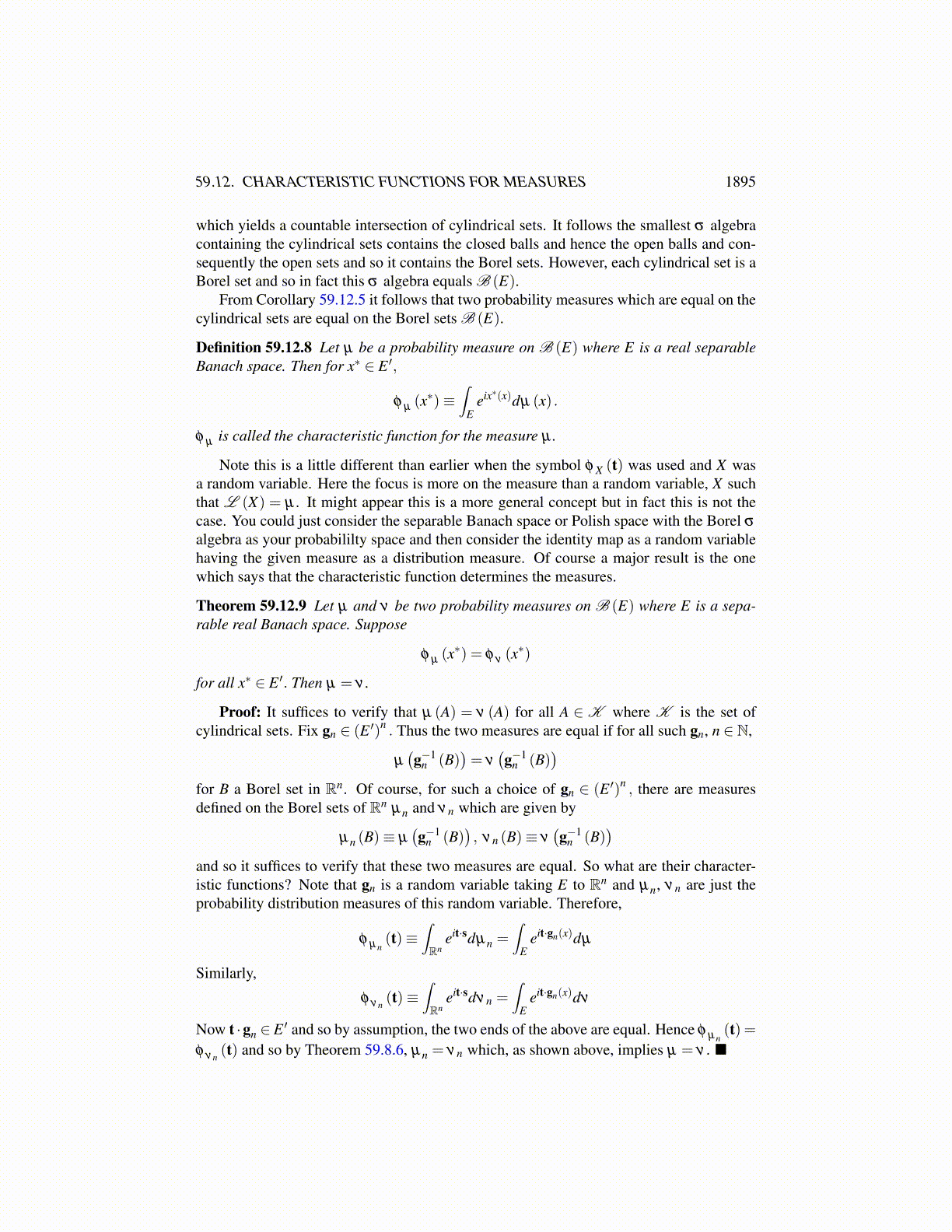
59.12. CHARACTERISTIC FUNCTIONS FOR MEASURES 1895
It follows ω → g(Y(ω)) = E (X|Y1 (ω) , · · · ,Yk (ω)) is σ (Y1, · · · ,Yk) measurable be-cause by definition ω→Y(ω) is σ (Y1, · · · ,Yk) measurable and a Borel measurable func-tion composed with a measurable one is still measurable. It follows that for all E Borel inRp, ∫
Y−1(E)XdP =
∫E
E (X|y1, · · · ,yk)dλ Y
=∫
Y−1(E)E (X|Y1 (ω) , · · · ,Yk (ω))dP
and so Z(ω) = E (X|Y1 (ω) , · · · ,Yk (ω)) works because a generic set of σ (Y1, · · · ,Yk) isY−1 (E) for E a Borel set in Rp. If both Z,Z1 work, then for all F ∈ σ (Y1, · · · ,Yk) ,∫
F(Z−Z1)dP = 0
Since F is arbitrary, some routine computations show Z = Z1 a.e.
Observation 59.11.5 Note that a.e.
E (X|Y1 (ω) , · · · ,Yk (ω)) = E (X|σ (Y1, · · · ,Yk))
where the one on the left is the expected value of X given values of Y j (ω). This onecorresponds to the sort of thing we say in words. The one on the right is an abstractconcept which is usually obtained using the Radon Nikodym theorem and its description isgiven in the lemma. This lemma shows that its meaning is really to take the expected valueof X given values for the Yk.
59.12 Characteristic Functions For MeasuresRecall the characteristic function for a random variable having values in Rn. I will givea review of this to begin with. Then the concept will be generalized to random variables(vectors) which have values in a real separable Banach space.
Definition 59.12.1 Let X be a random variable. The characteristic function is
φ X (t)≡ E(eit·X)≡ ∫
Ω
eit·X(ω)dP =∫Rp
eit·xdλ X
the last equation holding by Proposition 59.1.12 on Page 1860.
Recall the following fundamental lemma and definition, Lemma 32.3.4 on Page 1101.
Definition 59.12.2 For T ∈ G ∗, define FT,F−1T ∈ G ∗ by
FT (φ)≡ T (Fφ) , F−1T (φ)≡ T(F−1
φ)
Lemma 59.12.3 F and F−1 are both one to one, onto, and are inverses of each other.
The main result on characteristic functions is the following in Theorem 59.8.4 on Page1882 which is stated here for convenience.